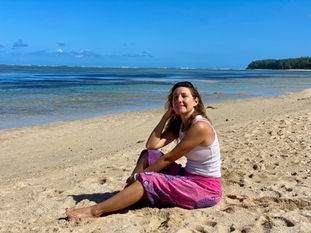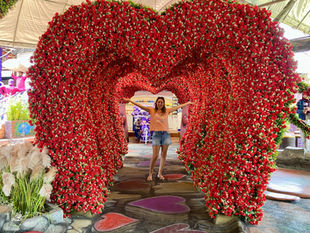
When Travel Becomes Discovery: Lessons in Immersive Travel, Culture & Presence
Sep 18
3 min read
0
0

Chopsticks and Culture Shock in Malaysia
Everyone who has ever ordered Chinese food has come across chopsticks.
In Mauritius, nothing ever felt like true culture shock. But Malaysia did — and it began with food. Growing up, I often watched friends use chopsticks as though they had been born with them. Despite my grandmother’s patient lessons — she had lived ten years in Vietnam — I always found chopsticks better suited as drumsticks on pots and pans than as cutlery.
Walk down Jalan Alor or Petaling Street in Kuala Lumpur and you’ll quickly learn: if you can’t handle chopsticks, you won’t get far.
Fast forward forty years. Will and I land in Kuala Lumpur. Dinner? Street food. Cutlery? Chopsticks. Will is perfectly at ease. Me? Not so much. Try eating Pad Thai with your fingers when chopsticks make no sense at all.
But travel is discovery. Will began teaching me, patiently adjusting my grip. A few weeks later — helped along by a kind sushi chef — I still can’t claim mastery, but I no longer send my food flying across the table. That feels like progress.
Travel Etiquette and Everyday Lessons
Malaysia, being predominantly Muslim, comes with its own etiquette. People don’t shake hands; instead, they place their right hand over the chest and bow gently. Pointing with the forefinger is considered rude — the thumb is used instead. Shoes come off before entering homes or temples. Gifts and money are passed with the right hand only. And respect for elders is woven into every small gesture.
Daily life feels instantly different, each detail quietly reminding me that I’m far from home.
A Mosaic of Cultures and Beliefs
Malaysia’s population is a vivid blend: Malays, Chinese, and Indians; Muslims, Buddhists, Christians, Hindus, Taoists. A mosaic of cultures and beliefs, all intersecting. Every day offers a new surprise — a different way of greeting, eating, or worshipping.
And it got me thinking: what must it have been like for the first explorers, suddenly confronted with worlds so unlike their own?
From Early Explorers to Modern Travellers
Today, we prepare with guidebooks, blogs, and videos. A hundred years ago, there was none of that. Travellers were fully exposed to the unknown. Some never returned home, falling in love with the places and cultures they encountered. Others condemned what they couldn’t understand, dismissing it in narrow-minded ignorance.
We all studied the famous navigators at school — the ones who set sail across oceans not knowing what lay ahead. Some discovered islands and trading ports; others mapped coastlines or recorded new species. A few left books and maps, and later travellers blessed us with photographs of worlds few had seen.
I remember hiking in Ebony Forest in Mauritius, a place as intact as it was millions of years ago. Standing at a lookout, the valley dropping to the sea, I thought: what must it have been like for the first sailors who landed here? They must have believed they’d found paradise — waterfalls spilling fresh water, lush forests, rare birds.
Tourist vs Traveller — Two Ways of Seeing
Even a century ago, travellers who ventured into Africa or Southeast Asia often stayed for years. Their journeys were slow, immersive, raw. They absorbed, witnessed, and felt. They lingered long enough to ask questions, to learn, to be transformed before moving on. Travel wasn’t a checklist of highlights — it was a way of life.
Today, everything is mapped, reviewed, and available at the tap of a screen. We arrive, but often only to eat with other Westerners, speak only English, and leave without ever scratching beneath the surface. Many travellers don’t even bother to learn a few local words.
Beautiful places have become “Instagrammable” — backdrops for a photograph, not moments to absorb. For me, discovery comes from lingering, watching, absorbing. From staying long enough for a place to speak back.
When Travel Becomes Immersive Discovery
So where is the discovery? Where is the adventure?
Travel is more than moving through places; it is how those places move through us. Immersive travel teaches humility, respect, and presence. Tourists seek comfort and predictability; travellers embrace discomfort, language barriers, and cultural differences.
In the end, the choice is ours: snapshot tourism or slow discovery. One leaves us entertained. The other leaves us transformed.










